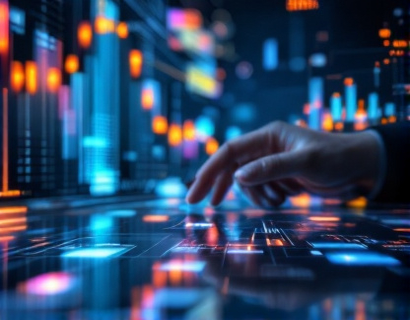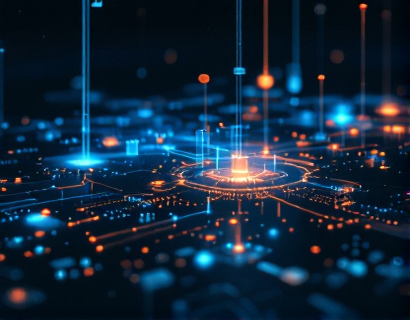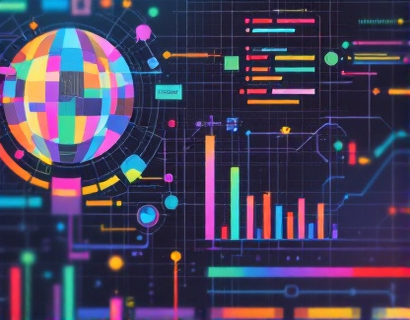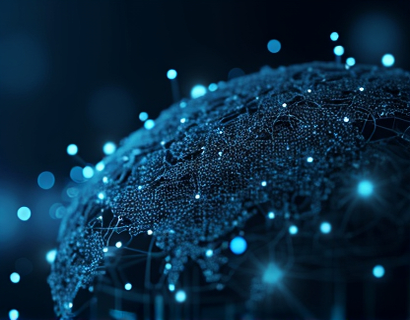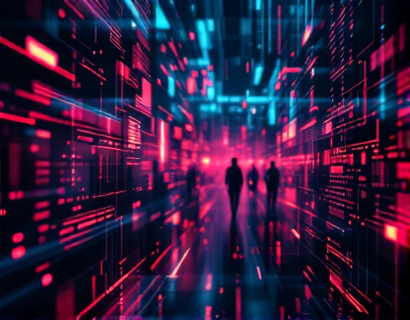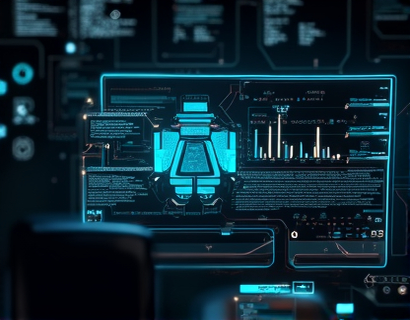AI and Crypto: Pioneering a New Era of Digital Productivity
The intersection of artificial intelligence and cryptocurrency is giving birth to a new paradigm in digital productivity. This fusion is not just a technological curiosity but a transformative force that is redefining how we work, interact, and manage our digital lives. For tech enthusiasts and early adopters, this convergence offers unprecedented opportunities to enhance efficiency, security, and innovation. This article delves into the ways AI and cryptocurrency are reshaping the digital landscape, providing insights and examples that highlight the potential of these next-gen innovations.
Understanding the Synergy
The synergy between AI and cryptocurrency is multifaceted. AI, with its ability to process vast amounts of data and learn from patterns, is invaluable in the realm of blockchain technology, which underpins cryptocurrencies. Conversely, the decentralized and secure nature of cryptocurrency provides a robust framework for AI applications to operate in a trustless environment. This mutual enhancement creates a powerful combination that is driving advancements in various sectors, from finance to healthcare, and beyond.
Enhancing Security with AI and Crypto
One of the most significant benefits of combining AI and cryptocurrency is the enhancement of security measures. Traditional security systems often rely on centralized authorities, making them vulnerable to breaches and hacks. AI, when integrated with blockchain, can create decentralized security protocols that are inherently more resilient. Machine learning algorithms can detect anomalies and potential threats in real-time, ensuring that transactions and data remain secure. Smart contracts, self-executing contracts with the terms directly written into code, can be audited and verified by AI, reducing the risk of fraud and errors.
For instance, AI-driven security solutions can monitor blockchain networks for suspicious activities, such as unusual transaction patterns or attempts to manipulate the network. These systems can automatically trigger alerts or countermeasures, maintaining the integrity of the blockchain. This level of security is crucial for businesses and individuals who rely on cryptocurrency for transactions, ensuring that their assets are protected against cyber threats.
Optimizing Smart Contracts with AI
Smart contracts are a cornerstone of blockchain technology, automating and enforcing contractual obligations without intermediaries. However, the complexity of smart contract code can lead to vulnerabilities and inefficiencies. AI can play a pivotal role in optimizing these contracts. By analyzing vast amounts of code and transaction data, AI algorithms can identify potential issues and suggest improvements. This not only enhances the reliability of smart contracts but also reduces the time and cost associated with their development and deployment.
For example, AI can assist in generating more efficient gas-cost minimizing code for Ethereum smart contracts. By learning from existing contracts and their performance, AI can propose optimizations that reduce execution times and lower transaction fees. This is particularly beneficial for decentralized applications (dApps) that rely on smart contracts to function seamlessly and cost-effectively.
AI-Powered Cryptocurrency Trading
The trading of cryptocurrencies is another area where AI and cryptocurrency converge to revolutionize digital productivity. Traditional trading methods often rely on human intuition and analysis, which can be limited by cognitive biases and the inability to process vast amounts of data simultaneously. AI algorithms, on the other hand, can analyze market trends, news sentiment, and historical data to make informed trading decisions. This results in more accurate predictions and higher returns for traders.
AI-driven trading platforms can execute trades at optimal times, manage risk, and adapt to market conditions in real-time. These platforms can also provide personalized insights and recommendations based on a user's trading history and risk tolerance. For early adopters, this means access to advanced trading tools that level the playing field and enhance their investment strategies.
Decentralized Finance (DeFi) and AI
Decentralized Finance (DeFi) is an emerging field that leverages blockchain technology to create financial systems without traditional intermediaries. AI is a key enabler of DeFi, offering solutions that improve accessibility, efficiency, and security. AI algorithms can optimize lending and borrowing processes, manage risk, and detect fraudulent activities in real-time. This creates a more robust and user-friendly financial ecosystem.
For example, AI can help in dynamic pricing of decentralized lending protocols, adjusting interest rates based on market conditions and borrower creditworthiness. This ensures that both lenders and borrowers benefit from fair and adaptive pricing models. Additionally, AI can enhance the user experience by providing intuitive interfaces and automated financial management tools, making DeFi accessible to a broader audience.
Supply Chain Management with AI and Crypto
Supply chain management is another sector that stands to gain significantly from the integration of AI and cryptocurrency. The complexity and opacity of global supply chains can lead to inefficiencies, delays, and fraud. By combining AI with blockchain, companies can create transparent and traceable supply chains that enhance productivity and trust.
AI can optimize supply chain operations by predicting demand, managing inventory, and streamlining logistics. Blockchain ensures that all transactions and movements are recorded in a tamper-proof manner, providing a clear and verifiable history of the supply chain. Cryptocurrency can facilitate seamless and secure payments across the supply chain, reducing the need for intermediaries and lowering transaction costs. This combination not only improves efficiency but also promotes sustainability by reducing waste and carbon footprint.
Healthcare Innovations with AI and Crypto
The healthcare industry is another domain where AI and cryptocurrency are making significant impacts. Patient data security and privacy are paramount, and blockchain provides a secure platform for storing and sharing medical records. AI can analyze these records to provide personalized treatment recommendations, predict disease outbreaks, and optimize resource allocation.
For instance, AI-powered diagnostic tools can analyze medical images and patient data to identify conditions with high accuracy. These tools can be integrated with blockchain to ensure that patient data is securely shared between healthcare providers, enhancing the quality of care. Cryptocurrency can be used for secure and transparent transactions, such as payments for services and incentives for data sharing. This creates a more efficient and patient-centric healthcare system.
Challenges and Considerations
While the potential of AI and cryptocurrency in enhancing digital productivity is immense, there are challenges that need to be addressed. Regulatory uncertainties, scalability issues, and the need for standardization are among the key hurdles. Additionally, the technical complexity of these technologies can be a barrier for widespread adoption. However, as the ecosystem matures and more solutions emerge, these challenges are likely to be overcome.
It is also crucial to consider the ethical implications of AI and cryptocurrency. Ensuring that these technologies are used responsibly and equitably is essential for building trust and fostering widespread adoption. Transparency, accountability, and user privacy must remain at the forefront of development and implementation.
Conclusion
The fusion of AI and cryptocurrency is transforming digital productivity in profound ways. From enhancing security and optimizing smart contracts to revolutionizing trading, finance, supply chain management, and healthcare, the possibilities are vast. For tech enthusiasts and early adopters, this convergence offers exciting opportunities to innovate and lead the charge in the next generation of digital solutions. As the technology continues to evolve, the potential for further advancements and new applications is limitless.













